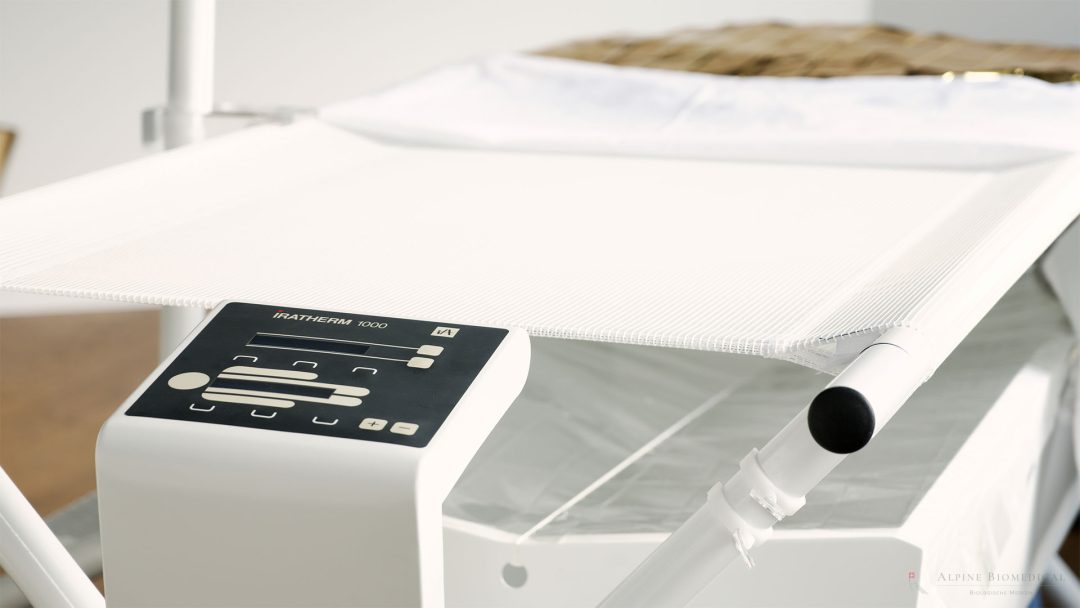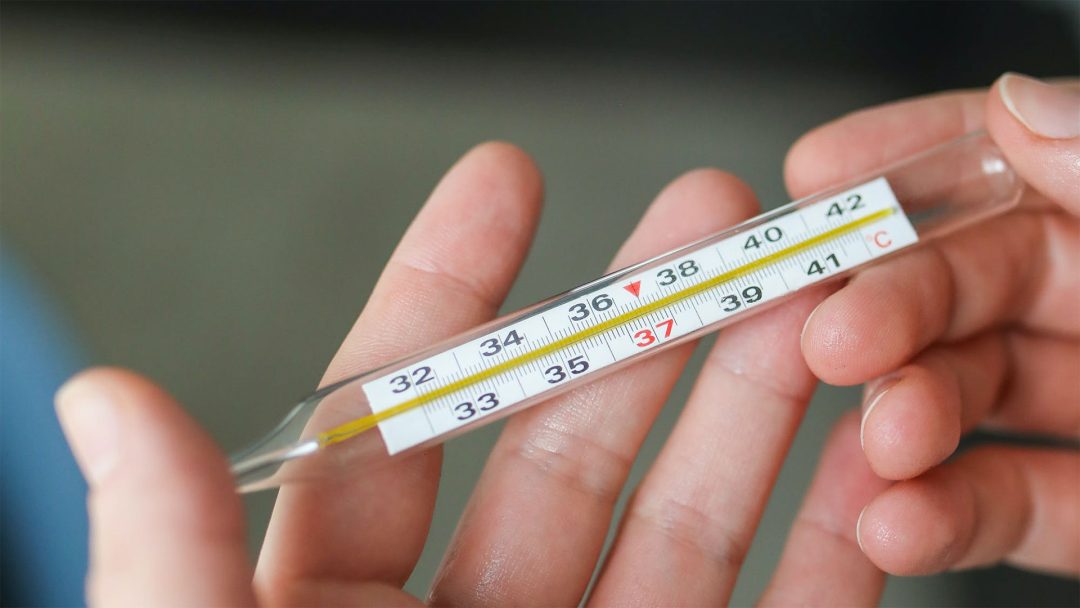Hyperthermia

Hyperthermia, also known as passive fever therapy or artificial fever, is a treatment method in which the body temperature is deliberately increased. The body is heated to temperatures between 38.5 and 42° C in order to utilise the positive effects of a fever. This method stimulates the immune system, promotes detoxification through increased sweating and improves blood circulation in the tissue.
What is hyperthermia therapy?
The word hyperthermia comes from the Greek and means overheating. Hyperthermia therapy utilises the positive effects of fever to treat various ailments in the long term.
Basic research shows that from a temperature of 41.5° C, depending on metabolic conditions, a cell-killing and growth-inhibiting effect can occur in carcinomas or cancer. However, hyperthermia is not only used to treat cancer and chronic infections, but also has positive effects on chronic pain, immunodeficiency, fibromyalgia and rheumatism.
Fever is a natural and effective reaction of the body to various pathological conditions. Many people lose the ability to develop a fever in the course of their lives. Hyperthermia is used to create a kind of artificial fever, allowing the positive properties of fever to be utilised.
How does hyperthermia work?
Hyperthermia leads to a warming of the tissue and thus causes a variety of positive effects.
The most important effects of hyperthermia include:
- Dilation of the blood vessels
- Improvement of microcirculation through increased blood flow velocity and fluidity
- Optimisation of the oxygen supply to the tissue
- Relaxation of the musculature
- Increasing the elasticity of connective tissue
- Pain relief
- Inhibition of inflammation
- Strengthening the immune and hormone system
- Stimulation of the metabolism and improved detoxification of the body
Physiological effects of hyperthermia
There are a variety of physiological effects at cellular and molecular level.
Below we explain some of the important physiological effects of hyperthermia:
Immune messengers:
Heating causes the body’s own interferons to become more effective. For example, the important anti-tumour messengers IFN-γ (interferon gamma) and TNFα (tumour necrosis factor alpha) have an increased anti-proliferative effect, meaning it suppresses tumour cell proliferation.
Role of tumor necrosis factor alpha in hyperthermia-induced apoptosis of human leukemia cells
Reaction speed and transport properties:
Both intra- and extracellularly, the flow rate and transport properties increase. In addition, the intracellular reaction speed increases and the cell membrane becomes more permeable. This leads to an acceleration of metabolic processes and improves the supply of nutrients and oxygen to the cells. The detoxification of the cells is also promoted in this way.
Nucleic acid and protein biosynthesis:
There is an inhibition of nucleic acid synthesis (DNA and RNA) and protein biosynthesis. This affects cancer cells and hidden pathogens as well as the body’s own cells to varying degrees.
Heat shock proteins:
The targeted application of heat induces the increased formation of heat shock proteins. In particular, the heat shock proteins HSP27, HSP70 and HSP90 are increasingly produced. Heat shock proteins, which are formed on the surface of heated cancer cells, signal the body’s own killer cells to break down the damaged cells. This apoptosis of the cancer cells is initiated when the tumour is heated to 42 °C.
Enhancing the effect of other therapies:
Hyperthermia can sensitise other cancer therapies, such as chemotherapies or radiotherapies, in the sense of a sensitiser and improve their effect accordingly. The combined use of hyperthermia can therefore contribute significantly to the effectiveness of these therapies.
What forms of hyperthermia are there?
Hyperthermia can be applied either locally or regionally to a specific area or systemically to the entire body. A distinction is made between whole-body hyperthermia and localised hyperthermia. Active fever therapy is also used, in which the fever is generated internally.
Whole Body Hyperthermia
Whole-body hyperthermia is a therapy in which the entire body is specifically brought into a state of overheating.

Local Hyperthermia
Localised hyperthermia is an innovative form of therapy in which a specific area of tissue is heated.

Fever Therapy
Fever therapy uses the healing effect of fever to effectively treat various illnesses.

Areas of application and possible uses of hyperthermia
Hyperthermia can be used for a variety of clinical pictures. It has proved particularly successful in the treatment of cancer, but hyperthermia can also provide valuable support for immune disorders, chronic pain or infectious diseases.
Cancer
Hyperthermia is an established method of damaging and killing cancer cells. This heat therapy has proven successful in numerous studies.
Long COVID
Whole-body hyperthermia has proven to be an effective and easy-to-implement way to recover patients with long COVID.
Application of Whole-Body Hyperthermia to Support “Long-COVID” (POST-COVID-19) Rehabilitation
Fibromyalgia
Hyperthermia has a lasting effect on reducing pain and improving quality of life in fibromyalgia.
Hyperthermia against fibromyalgia syndrome
The effect of whole-body hyperthermia on inflammation and immune reactions: experimental principles
Depression
Hyperthermia shows promising results in patients with depression. Various studies have confirmed the positive effect on depression.
Whole-Body Hyperthermia for the Treatment of Major Depressive Disorder: A Randomized Clinical Trial
Lyme disease
The first successes in the treatment of Lyme disease can be seen with whole-body hyperthermia from 38°C upwards. From 42°C, even therapy-resistant and heat-stable strains can be successfully treated.
Antibiotics and increased temperature against Borrelia burgdorferi in vitro
Complex therapy for chronic Lyme disease
Zais ODA. Hyperthermia and Lyme disease – Different therapeutic strategies. Abstract VIII. Hyperthermia Symposium of the German Society for Hyperthermia, Berlin Sept 2017:6
Joint diseases and chronic pain conditions
Chronic pain, such as rheumatism, back pain, arthritis or arthrosis, can respond well to treatment with hyperthermia after thorough clarification and diagnosis.
Immune disorders
Hyperthermia can be used to treat immune disorders such as asthma or hay fever. A weakened immune system can also benefit from hyperthermia therapy.
Inflammatory bowel diseases
Inflammatory bowel diseases such as irritable bowel syndrome, ulcerative colitis and Crohn’s disease can be improved by treatment with hyperthermia.
Detoxification
In hyperthermia, detoxification is achieved via various physiological mechanisms. This leads to increased permeability of the cell membranes, better blood circulation and optimised transport properties in the tissue with an increase in lymph flow. This enables effective detoxification of the body, which is further enhanced by perspiration.
Integration into an overall concept
Hyperthermia can become considerably more effective and efficient if it is integrated into a well thought-out and effective overall concept.
The integration of additional measures to combat cancer, modulate the immune system and detoxify the body can optimise the effectiveness and increase the success of the therapy. Therapy should always focus on the cause of the disease.
Dr. med. Karsten Ostermann M.A.
Hyperthermia should always be used as part of an effective integrative concept and supervised by an experienced physician.

Frequently asked questions and answers about hyperthermia
Hyperthermia offers valuable support for a variety of diseases, such as cancer, chronic inflammation or pain. Below we answer some of the most frequently asked questions as comprehensively as possible.
Hyperthermia is characterised by excellent tolerability. Side effects occur very rarely and are generally minor. Side effects are mainly localised burns that heal within a few days. More detailed information on the side effects of the various hyperthermia methods can be obtained from your doctor.
Hyperthermia should always be carried out by trained personnel in a practice. Therefore, no hyperthermia devices are manufactured for home use.
A simple but less effective form of heat therapy is the use of hot baths.
A complete hyperthermia treatment consists of several sessions. The number of sessions is determined by a detailed examination and diagnosis. Hyperthermia should be embedded in a comprehensive, effective overall concept. Therefore, the total cost of the combined treatment is more important than the cost of the individual hyperthermia sessions.
Further information
Further information intended to give a better overview of the topic.
